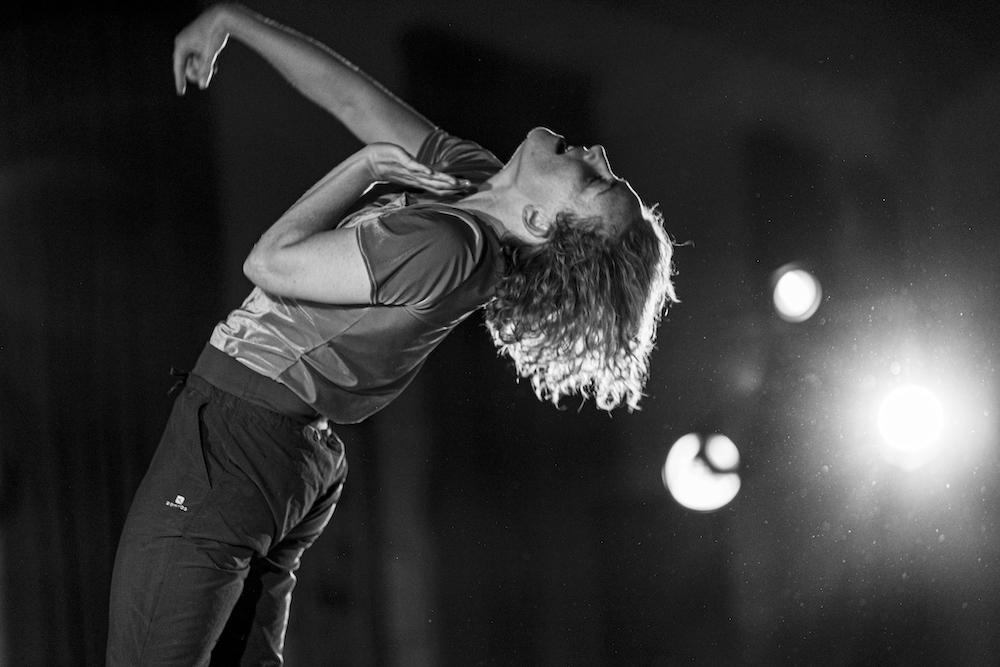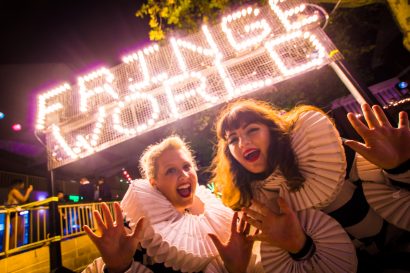It’s been nearly 10 years since Julia Gillard made her landmark misogyny speech in parliament, but local director Sally Richardson believes there’s never been a better time to look back to that seminal moment in Australian history.
A springboard to empower women
5 May 2021
- Reading time • 10 minutesDance
More like this
- How to watch ballet
- STRUT Dance comes of age
- Fairytale leaps to life with fun twist
Director of Steamworks Arts Sally Richardson talked to Nina Levy about the motivation behind her new contemporary dance work JULIA, and the role of art when it comes to grappling with social and political issues of our time.
It was 2018 when Sally Richardson first started working with dancer Natalie Allen to co-create a solo dance work that used Julia Gillard’s 2012 misogyny speech as its starting point.

Directed by Richardson, co-created by both artists and performed by Allen, the solo – now titled JULIA – began its life as #thatwomanjulia, and was performed at STRUT Dance’s “Short Cuts” season that year.
Referencing Prime Minister Gillard’s famous question time response to the leader of the opposition Tony Abbott, the work, Richardson told Seesaw, was “a response to the terrible things we see and hear, spoken to women in Australia; a way to overcome our feelings of helplessness in the face of the ongoing vilification and sustained abuse, the appalling sexism, misogyny and violence that is continually directed towards women at all levels of public and private life in this country.”
After presenting #thatwomenjulia at the 2018 MoveMe Festival, Richardson and Allen were keen to develop the 14 minute solo into a full-length work, but weren’t able to attract funding to continue. Then in 2019 Allen, a Perth-born dancer whose national reputation was forged performing with companies such as Sydney Dance Company and Australian Dance Theatre, left Australia to work in Shanghai with internationally renowned, London-based dance-theatre company Punchdrunk.
Allen’s international trajectory was abruptly halted, however, by the COVID pandemic. Returning to Perth in 2020, she contacted Richardson and suggested they have another go at extending the solo to full-length.
The pair applied for an Australia Council “Create” grant and this time they were successful. Though COVID restrictions were in place, the solo nature of the work meant they were able to get started straight away.
The pandemic is not the only global force that has had an impact on the development of this work. Three years on from JULIA’s beginnings, the conversation about sexism, misogyny and violence towards women continues to gain momentum.

The demands for change that have emerged as a result of advocacy by Australian women such as sexual abuse survivor Grace Tame and whistleblower Brittany Higgins have shaped the direction of JULIA, as have the 2021 Women’s March 4 Justice protests, continues Richardson.
“I think the work is now about having a voice, and not necessarily purely about rage or anger, which is probably where we started. It’s about speaking out and speaking up and calling it out.
“The other thing to consider [as we developed the work to full-length] was that there are other voices [aside from Gillard’s], and how we bring those other voices in, so that it wasn’t so much about Julia as martyr or Julia as heroine. The Julia story is a springboard, as the speech was a springboard, to empower others.”
Though contemporary dance in Perth tends to attract a relatively small, loyal following, Richardson believes that JULIA has the capacity to speak to a much broader audience. With that in mind, Richardson and Allen undertook a two-week residency in Harvey in April, which enabled them to consult and collaborate with that community whilst developing the work.
“In Harvey we engaged with a Filipino dance group [the Karinosa Dance Troupe], the Deadly Yorgas, who are a Noongar women dance group and performance group, the local Business Women’s Professional Association … We heard so many stories,” says Richardson. “I think it’s so interesting, when you’re making a work about women’s experience, how often it then invites women to share their conversation with you.”

The residency finished with a presentation of the work-in-progress. “It was sold out,” says Richardson. “Many of the women we had seen or met were in the room… but I was still nervous because JULIA is a strong contemporary dance work. We haven’t [watered] it down. But Natalie just had them in the palm of her hand … and then more than 60 people stayed for the post-show Q&A … there were men and women, there were people from different communities, who absolutely connected with the work.”
Richardson believes much of that connection is due to Allen’s magnetism as a performer, noting that young dancers in Harvey seemed inspired by her performance. “She’s courageous, she’s brave, she’s unapologetic, she’s beautiful. She’s not afraid to be herself, as a performer, and as an artist. And I think in terms of dance, but also in terms of communicating really challenging emotions and ideas, that’s incredibly inspirational for a young woman to see.”
JULIA’s premiere season in Perth and its subsequent run in Albany will also include discussion, with a half-hour conversation with leading women from arts, sport, politics and business before the show.
It’s clear these pre-and-post show conversations are just as important to Richardson as the work itself and that’s because she believes that art has a vital role to play when it comes to commentary on the issues of the day.
“I think art can change the way a community sees itself,” she says. “Art invites participation, and it can also lead in terms of reflecting values of inclusion, access, community, representation, respect, and collaboration.
Ultimately, art is humanising and it celebrates the very best we can be. It offers solutions, and a vision for a shared future, fresh perspectives and point of view, new ways of thinking, being and seeing.
“Ultimately, art is humanising and it celebrates the very best we can be. It offers solutions, and a vision for a shared future, fresh perspectives and point of view, new ways of thinking, being and seeing.
“It helps us access our emotions, offering healing and recovery, through the sharing of stories and experience. It’s a platform for dialogue, discussion and exploration, where we are able to confront challenging truths about the past, our future, and our sustainability.”
This ability to synthesize the past and the future is a huge driver for Richardson as an artist. Watching Brazen Hussies, a documentary about the legacy of the women’s liberation movement in Australia, she was struck by how recent that history is and, therefore, how fragile our progress is. “In Brazen Hussies, they say, ‘History has to be told over and over again. Unless it is retold it is lost.’
“Everything we have now [as women] is recent history. We have to keep reminding our audience – you know, we’ve only just seen the second woman ever to win an Academy Award for directing. It’s early days … and that’s why we tell a story about Gillard, nearly 10 years later, because it still matters, and because we’ve got a long way still to go.”
JULIA plays the Studio Underground at the State Theatre Centre of WA, 20-29 May 2021
The production will head to Albany Entertainment Centre, 4-5 June 2021.
Pictured top is Natalie Allen, performing ‘JULIA’ in Harvey. Photo: Jon Gellweller
Like what you're reading? Support Seesaw.






